Use our Bosnia and Herzegovina travel guide for first timers for ideas and context. Our trip to Bosnia made it one of our favorite destinations.
So there we were, catching an airless bus out of Dubrovnik. Rumbling toward a place called Neum on a tiny finger of territory 20 kilometers long. This is the spit which gives modern-day Bosnia and Herzegovina its legal access to the Adriatic sea. We didn’t know what to think.
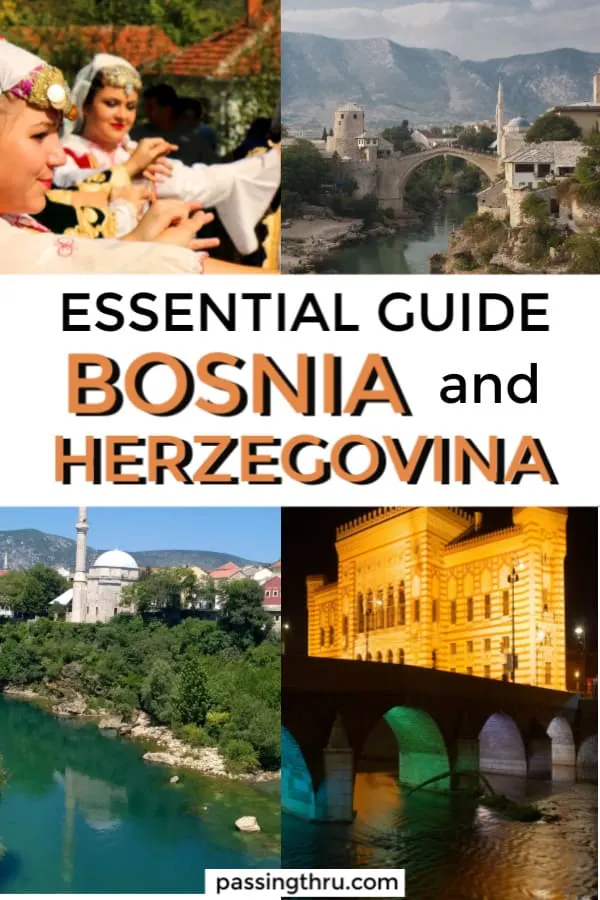
When they heard we were going to travel to Bosnia and Herzegovina, some people thought we were nuts. (Nothing new there.) Others asked if our Bosnia travel plan really was “safe.”
When we got there, at least one Bosnian wondered why we came at all. Apparently, Bosnia and Herzegovina trips aren’t all that common for Americans. But now that we’ve been, we want to return. This Bosnia and Herzegovina travel blog post will help you understand why.
This article contains affiliate links and/or references to our advertisers. We may receive compensation when you click on or make a purchase using these links.
Table of Contents
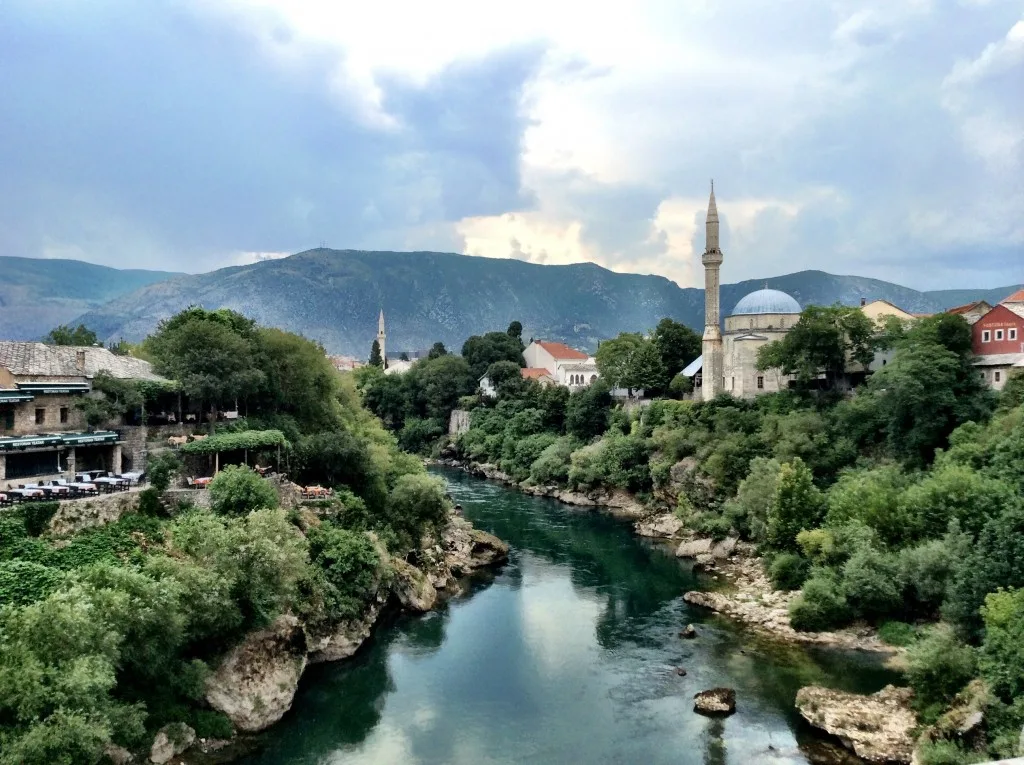
Ten things we couldn’t leave out of our Bosnia and Herzegovina Travel Guide for first timers:
1. Getting in and out might seem a little difficult, but it’s really nothing to worry about.
As it turned out, we had a lot of time to think during our trip to Bosnia and Herzegovina. Getting in and around this part of the former Yugoslavia, and then out, takes a while. If you’re planning to travel to Bosnia, we recommend going by surface, actually.
Note: If you are planning a day trip from Croatia to Bosnia, check out my post Dubrovnik to Bosnia Day Trip: Easy Planning Guide
There’s always something better about an approach at ground level, seeing your destination mirage in the distance, drawing nearer to the moment when outskirts give way to the reality of place. It beats dropping in from the sky to have a look around and then jumping back out.
Be ready for thorough border processing at border crossings. You will be perused and your documents will be scanned a couple of times – coming out of wherever you came from and coming in. If you’re self-driving, be prepared for a much longer line at the checkpoints than if you’re on one of the international buses.
We just bought regular public transport tickets to Mostar at the Dubrovnik station. Online ticketing? Sorry, not available at that time. Mostar to Sarajevo? Same deal, pay in cash at the station in Mostar. Buses are frequent, amenities are hit and miss. Announcements we couldn’t understand were kindly translated by fellow travelers. Yep, they could probably tell by looking at us that we might need a little extra help. We felt rather solicitously cared for, as Americans of a “certain age.”
If you want a cushier experience getting to and seeing Mostar, you might want to sign on for a tour, particularly if you are coming from Croatia. Because this destination is one of the top things to experience from there, you will find a variety of experiences from which to choose:
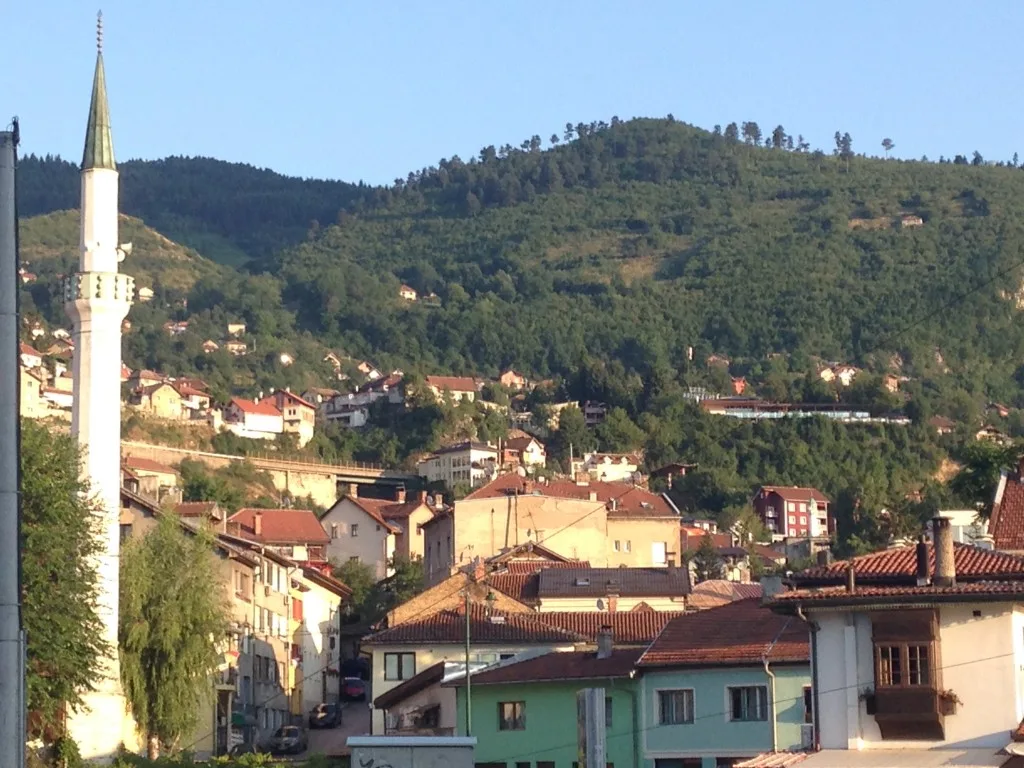
You may want to look around for alternative transport options if you’re leaving Sarajevo, as we did. An independent van company we saw in a newspaper ad ended up offering a much more comfortable, air-conditioned experience at a fraction of the price on that leg.
We just needed to be willing to accept an indeterminate departure: the van would leave when its passenger quota was filled. No worries.
We checked out of our hotel, the kind young man at the front desk made several phone calls to confirm and reconfirm departure, and ran outside to help us with luggage when the van finally did arrive.
2. There’s a difference between Bosnians and Bosniaks.
Bosniaks are an ethnic group. Bosnians are a nationality. Political affiliations have historically occurred along religious and ethnic lines: Bosnian Muslims, Serb Orthodox Christians, and Croat Catholics.

In the 1970s a political elite emerged via diplomatic service and Yugoslavia’s membership in the Non-Aligned Movement. After the death of Josip Broz Tito in 1980 and the demise of the Soviet Union, Yugoslavia’s individual nationalistic groups vied throughout the western Balkans for influence.
In the Bosnian National Assembly, ethnic tensions boiled over in a clash of attitudes favoring independence vs. remaining in the Yugoslav federation. Bosnian Serbs favored the federation, and independence was desired by Bosniaks and Bosnian Croats. This led to the Bosnian war in the early 1990s.
Today, the capital city of Sarajevo is often referred to as the “Jerusalem of Europe.” We found its multi-cultural atmosphere the most unique in all the capitals we have visited. Over the centuries, its status as a religious and political crossroads for conflict has been proven time and time again.
One of the best things to do in upon arrival is take a Sarajevo city tour. One of the Sarajevo walking tours will help you get oriented and plan your stay. Each of your senses will be impacted with the sights, sounds, and aromas of beautiful buildings, thriving outdoor markets, exotic foods and goods, and the regular calls to religious prayer.
3. Bosnia and Herzegovina may require more cash than you anticipated. Here’s why:
After World War II, when Tito and his partisans formed the Socialist Federal Republic of Yugoslavia, Bosnia and Herzegovina was one of its six constituents. Up until 1992, Bosnia was prosperous: military defense industry and multi-national corporate presence brought economic strength. An upwardly-mobile Bosnian might have worked at Volkswagen, Coca-Cola, Marlboro, Holiday Inn, or been involved with the 1984 Olympic Winter Games.
Then war devastated the Bosnian economy and destroyed its physical infrastructure. Its GDP essentially collapsed, free falling by 60%. Much of the country’s production has yet to be restored. Unemployment is close to 40%, with no sign of real stimulus affecting political and economic inertia.
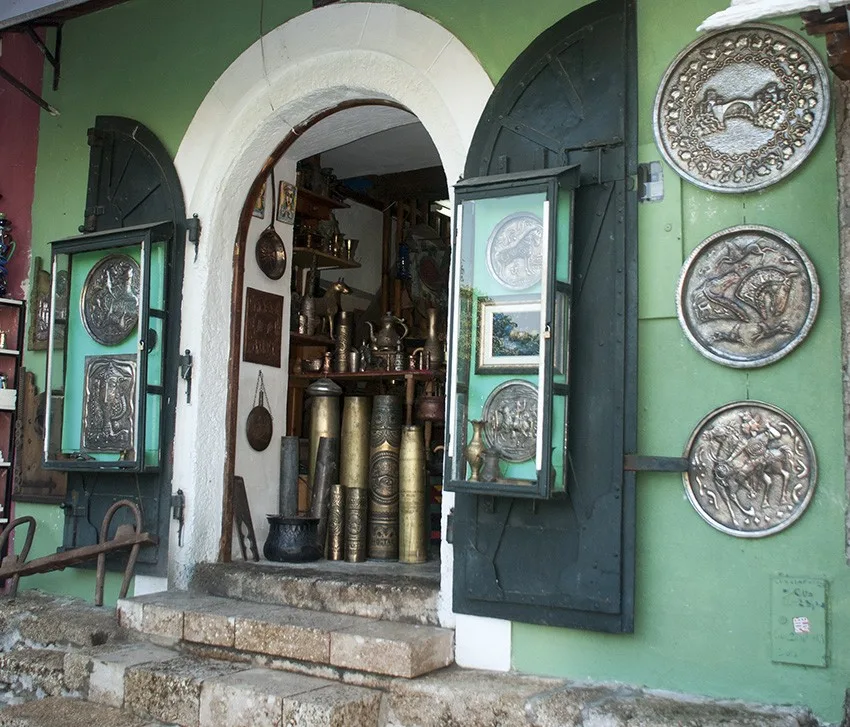
As you might expect with such conditions, there is a great deal of ingenious economic maneuvering. One of those is a free walking tour of Sarajevo. Our guide walked us through Sarajevo and revealed that while he held multiple graduate degrees in political science and diplomatic relations, he couldn’t find a job. Instead, he formed his Sarajevo walking tour company. With about 20 people in his tour that day, we estimated tips-only income might have equated to about $50 per hour. Paid in cash, of course.
We took several cash-only Sarajevo tours having discovered them only with the help of our Sarajevo hotel desk clerk. If you prefer to use a credit card and plan slightly in advance, there are variety of tours out of both Dubrovnik and Sarajevo that you can now book online.
The independent Bosnia and Herzegovina hotels at which we stayed either took only cash or had to be persuaded to accept payment by credit card. Whether this was due to an erratic banking environment or other bookkeeping-related reasons, we couldn’t say.
But it all worked out and we would not hesitate to stay again with our Sarajevo accommodation Hotel Latinski Most. Clean and comfortable, the suggestions and help from the staff are what made our Sarajevo stay superb.
Smaller businesses and restaurants were cash-only operations as well. ATMs are plentiful, and our U.S. debit cards worked just fine.
4. The scale of famous places to visit in Bosnia and distances may be different than you expect.
In the middle of Neum, our bus made a hard right, zig-zagging up and away toward Mostar. As the crow flies (across Google Maps) it’s not that great a distance between the two, less than 90km. Traffic, road conditions, and struggling uphill were bus-related challenges that led to a journey of more than 3 hours.
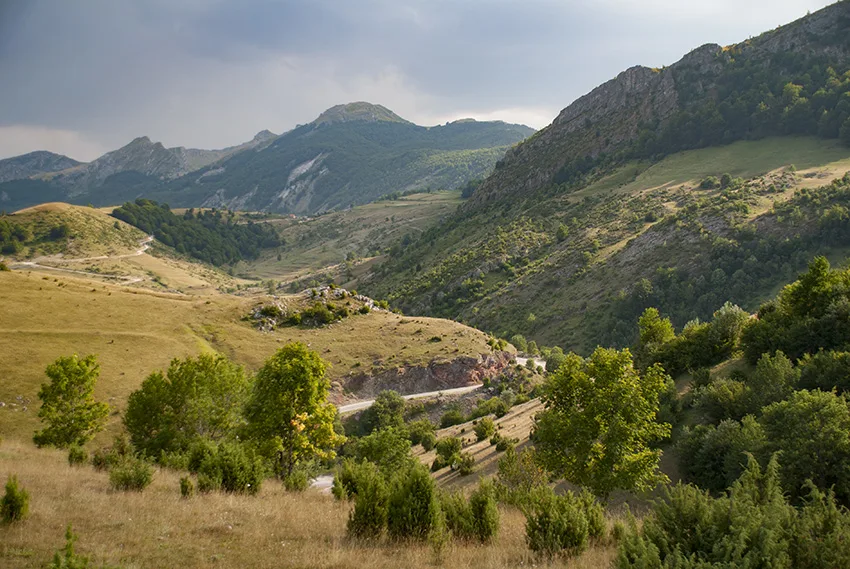
We could look across the river from our Sarajevo hotel to the place where the Archduke was assassinated. Somehow, we’d expected it to be a big plaza, where the assassins could have hidden in enormous crowds. It wasn’t; it was just a tiny nondescript little street corner with an old bridge next to it.
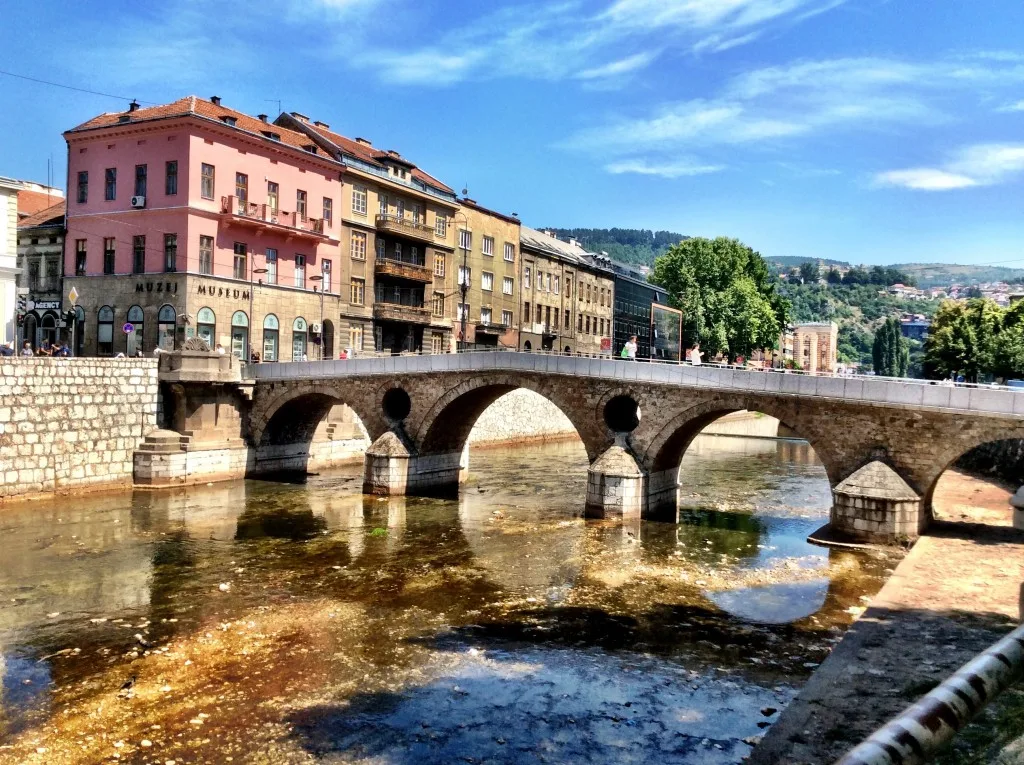
The hills from which Serbian forces fired on the streets of Sarajevo in the early 90s seemed all too close; the airport where the UN airlift off-loaded life-saving supplies is only a couple of kilometers from the city center.
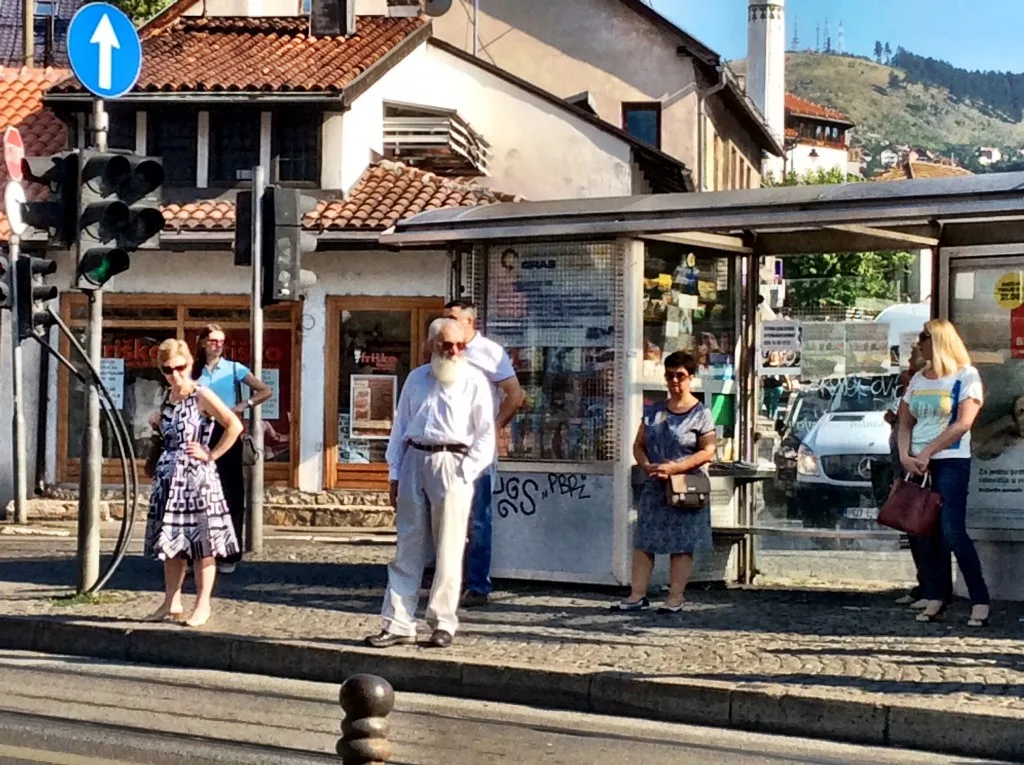
The fresh market where 68 people were killed and 200 wounded by an artillery shell, a tipping point which led to NATO air strikes, is no larger than our favorite open-air market on the island of Kauai. Sarajevo’s market was open-air then, too. Now it has a protective roof and business goes on with the memories.
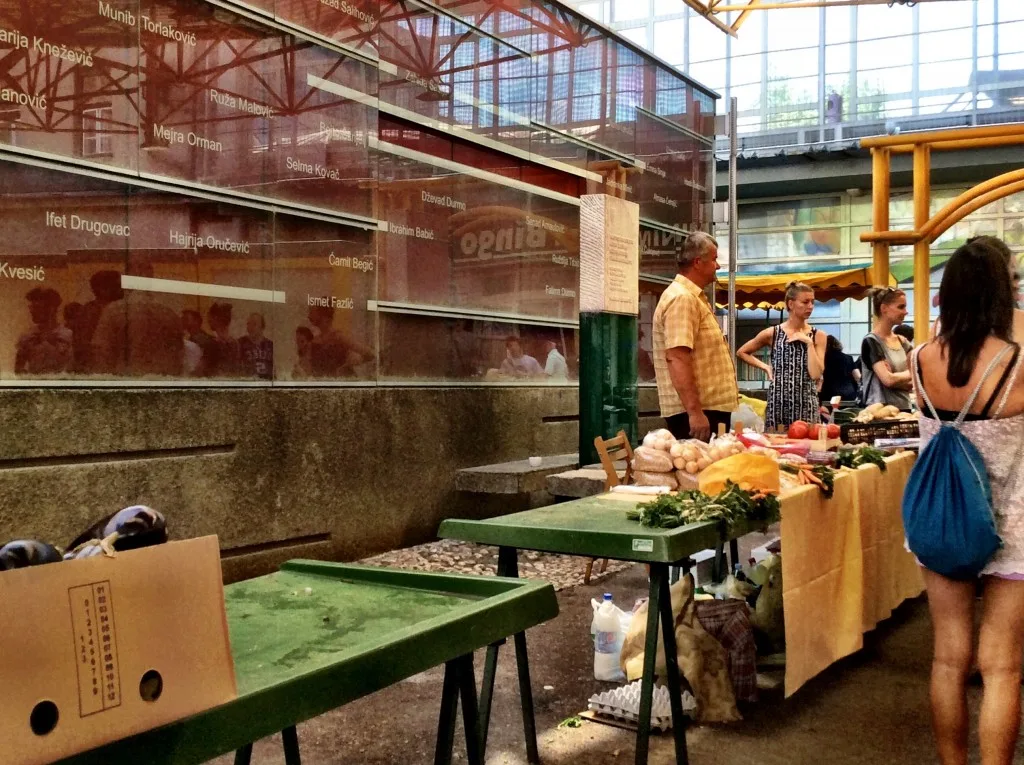
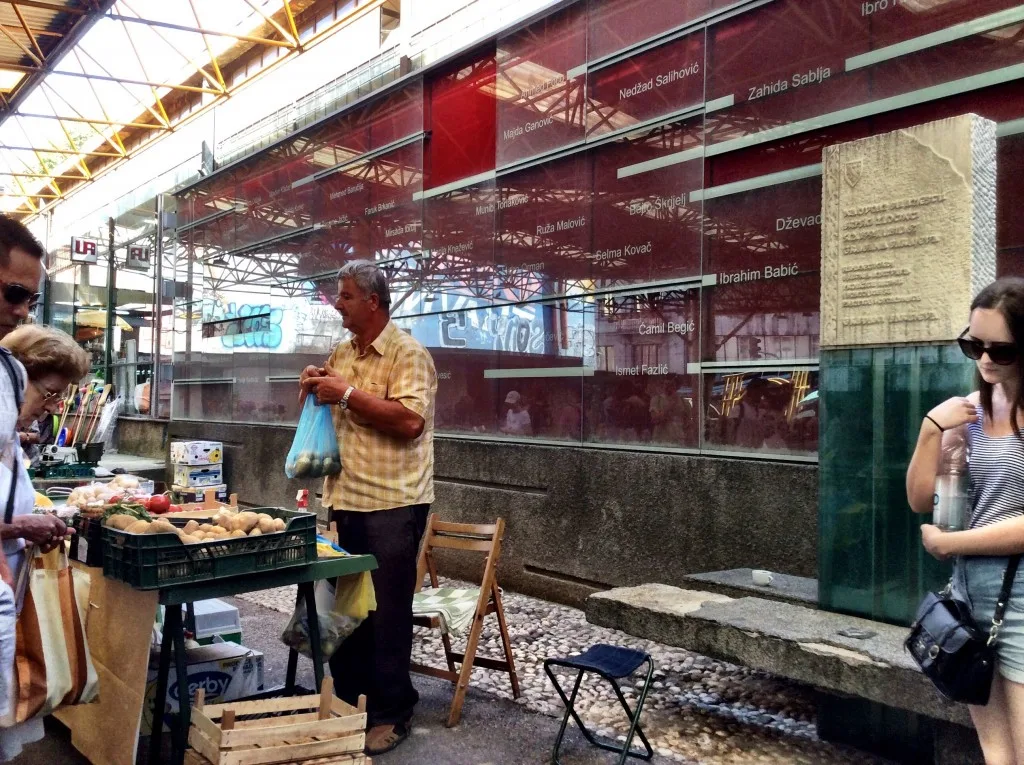
5. Is it safe to travel to Bosnia (2023)? Yes, the Bosnian war has been over for decades. That said, evidence of war is easy to see.
Now might be just the best time to visit Bosnia and Herzegovina. The war has been over for decades and the energy in the country is positive. Your Bosnia travel itinerary can be more free and flexible than ever.
Background: Between 1990 and 1992, sovereignty was declared by various entities in the region and boycotted by others. An independence referendum was held with 63% turnout and 99.7% in favor; Serb nationalists didn’t vote at all. As admittance into the United Nations became pending in 1992, tensions escalated.
Neum, the little coastal town in which our bus turned inland, took artillery fire from Serb positions in March that year. A month later, a Serb attack on Sarajevo’s peace rally is the moment that is generally agreed catalyzed open warfare between the three major ethnic communities.
Bosniak civilians were targeted in all major cities, captured and displaced by Bosnian Serb forces and sympathizers. Both Serbian and Croatian interests sought to expand their respective borders. When government-sanctioned warfare began in 1993, non-Serbs suffered civil rights violations and ethnic cleansing, such as occurred in the Srebrenica massacre. The town of Srebrenica is located in what is now known as Republika Srpska, sister entity to the Federation of Bosnia and Herzegovina.
This genocide elicited a response from the United States and the international community in the form of a NATO bombing campaign while Croat and Bosnian allies pushed back against the Serbs. In 1995, by agreement between representatives of Bosnia and Herzegovina, Croatia and Serbia, the fighting stopped, with NATO peacekeeping forces deployed and eventually peace talks restoring a fairly civil society.
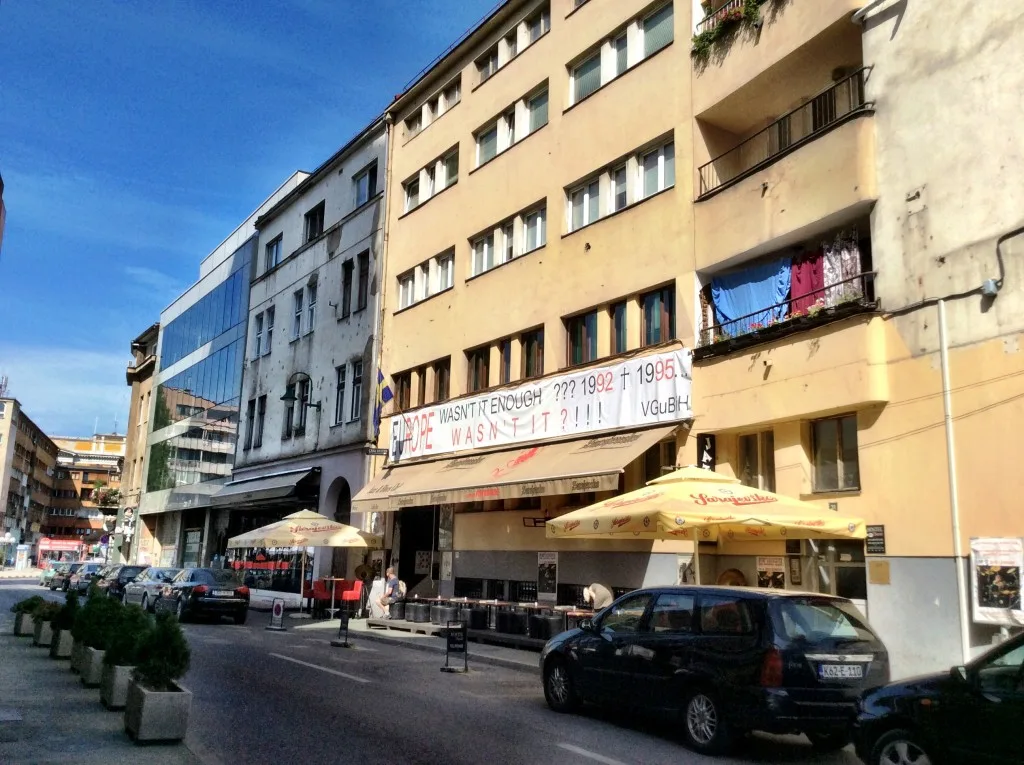
As we awaited dinner on our first night in Mostar (which is a UNESCO World Heritage Site), we picked up a coffee table-sized photography book at an adjacent restaurant table. Its images were taken during and right after the war.
The city was leveled, the beautiful Stari Most spanning the Neretva River, and the main mosque below it destroyed. The book itself was tattered, with a vintage aspect. We had to keep reminding ourselves that these events were younger than our children, whose childhoods seem like yesterday.
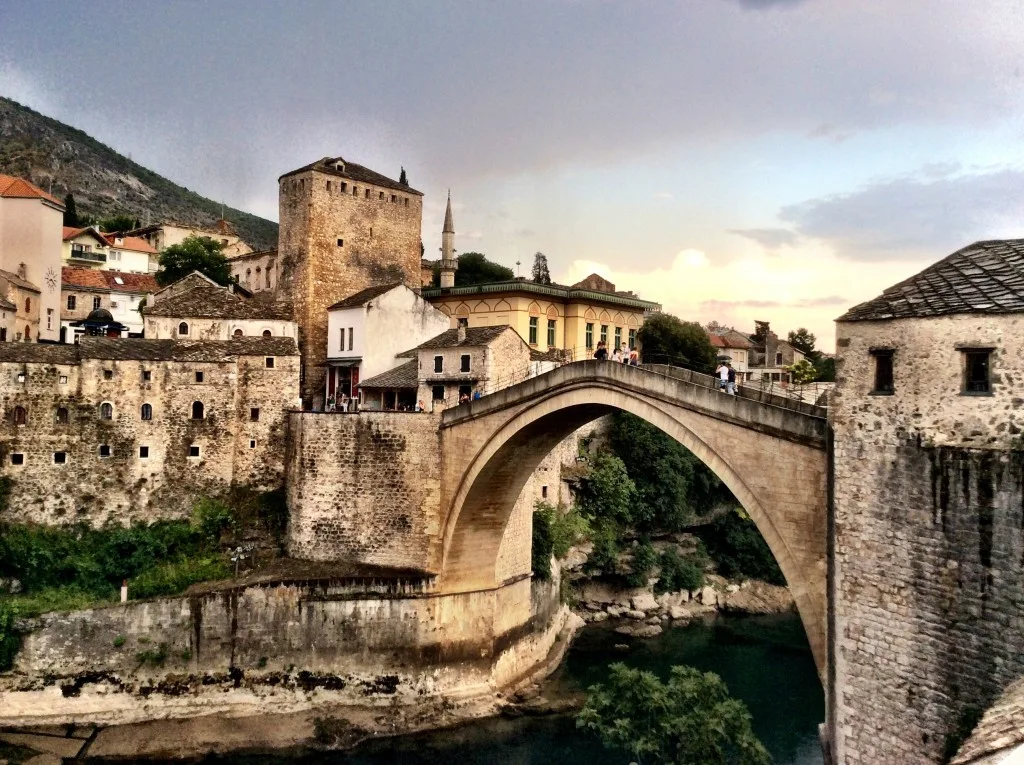
We sought the perspective of our two young Bosnia guides in Sarajevo, and asked is Bosnia and Herzegovina safe to visit.
The first had spent the war years, which began when he was seven years old, attending a makeshift school in the basement of his apartment building. His teachers risked their lives to get to their students. His mother walked several kilometers to work, always in high heels: she “wanted to look good if today were to be her last.”
The second had spent childhood in Vienna with relatives who took his family in when the war broke out. No one ever expected things to endure over four years.
Both young men felt it was necessary to move on from the past; both acknowledged that personal losses might prove this impossible for others. They were both glad to see more Europeans taking Bosnia and Herzegovina vacations.
While this may be the best time to travel to Bosnia in over two decades, they accepted that political opinions vary in opposite directions depending upon whom you ask. These assessments were equal parts logic and forgiveness; we were humbled and impressed.
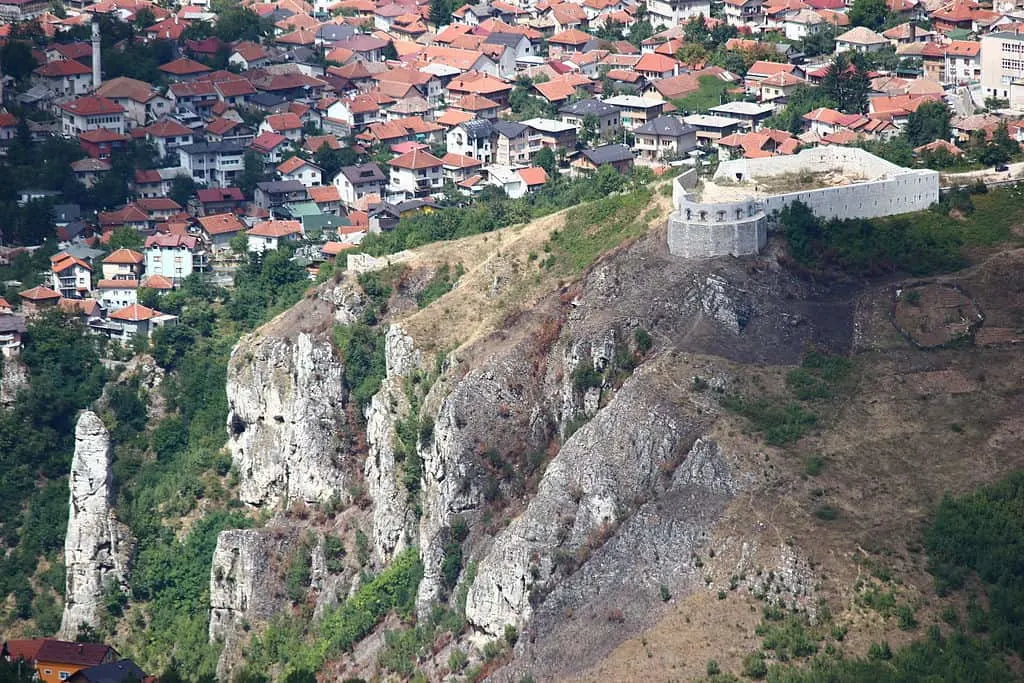
If you’re traveling to Bosnia, you may want to take a more meaningful deep dive into the war years with a guided tour which will take you to specific, prominent sites in Sarajevo. The perspective offered by your Bosnia tour guides who were personally impacted by the war will be sobering. As well, you will gain a better understanding of the issues which affect the country today.
The Sarajevo: Times of Misfortune bus tour begins with a panoramic view of the city from the White Fortress which sets the stage with background information as you go on to visit various places that figured prominently during the four-year siege. Click here for more information and booking.
You might find the Sarajevo: Balkans Dark Side and War Tour more geared to your particular interests and an increased understanding. This 5 out of 5 star reviewed tour takes a somewhat different approach with Skip the Line access to the Tunnel War Museum and Vidikovac viewing points. Click here for more information and booking.
Is Bosnia and Herzegovina safe for tourists who venture off the beaten path? “Official” sources warn that visiting Bosnia can be dangerous due to unexploded land mines and other residual ordnance. No doubt this is true. Certain areas are marked off-limits with forbidding signage. We encountered none.

The country has had thirty years to make more highly trafficked areas safe for passage. If you stick to paved highways and urban locations when you travel to Bosnia and Herzegovina, you’ll be fine. Even our foray on dirt and forest roads into the mountains above Sarajevo where Olympic ski runs and infrastructure still serve winter sports enthusiasts was without incident or any evidence.
6. Politics in Bosnia and Herzegovina? Things have always been complicated here, and they still are.
Eastern Europe has long been the place where religions and empires intersected. Clashes and power struggles, boundary fluctuations, and regime changes since the sixth century have permeated the Bosnian identity and landscape. We were amazed how little our history classes had covered Balkan wars and significant events dating back to medieval times which had occurred in this region. As well, the influences of different religious sects and ideology – from pagan to modern Christianity and Islam – have left their mark.
Bosnia has had human inhabitants since Neolithic times. In the early Middle Ages, slavic tribes formed a confederation in this region during the first Migration Period in the 6th and 7th centuries. Roman Emperor Constantine designated Bosnia as an administrative area in the 10th century. Two hundred years later, it was formally established as a politically autonomous state within the Hungarian Crown. What followed until approximately 1391 was a series of power struggles between two prominent clans, with skirmishes and territory annexations. Following a 70 year decline, it was then annexed by the Ottoman Empire in 1463.
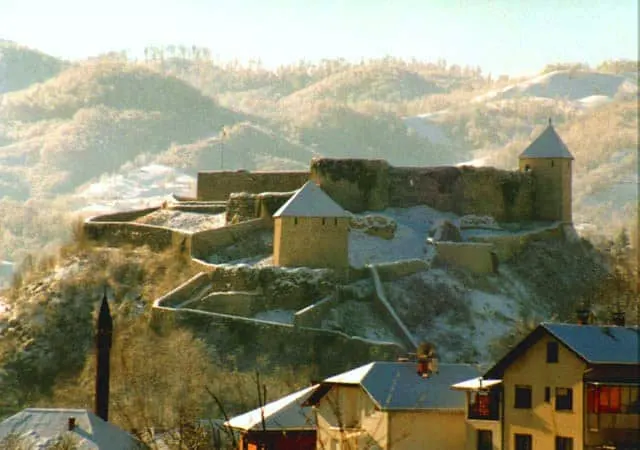
The Middle Ages are a fascinating period in this region. Thriving villages were protected by walled fortresses and natural geography. Tribal chieftains, Byzantine rulers, and Christian kings built imposing residences and added territory. Visit the medieval fortress at Tesanj, to which Bosnians refer as “the pearl of Bosnian tourism,” and the village of Vranduk and its citadel, which date to the 14th century, on the Age of Kings Tour from Sarajevo. Click here to book a day tour to Tesanj and Vranduk from Sarajevo.
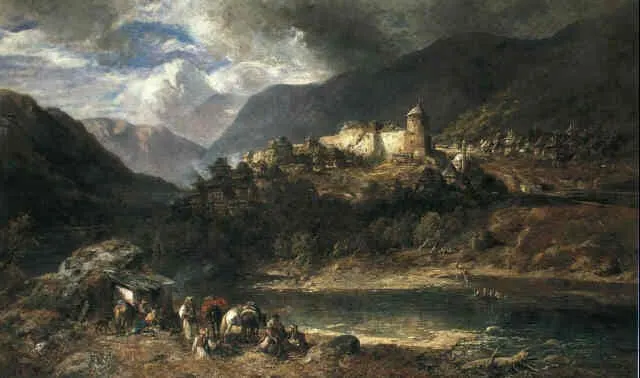
For a look at the cultural impact of ancient Muslim mysticism in Herzegovina, you’ll want to visit Blagaj. Older than Mostar, Blagaj has a Dervish monastery built around 1520, at the height of the Ottoman Empire, in a combination of Ottoman and Mediterranean style. The location is the site of an Illyrian fortress; Roman villages surrounding it were built during the Justinian era. Blagaj was an important medieval fortress and political seat during the Ottoman Empire.
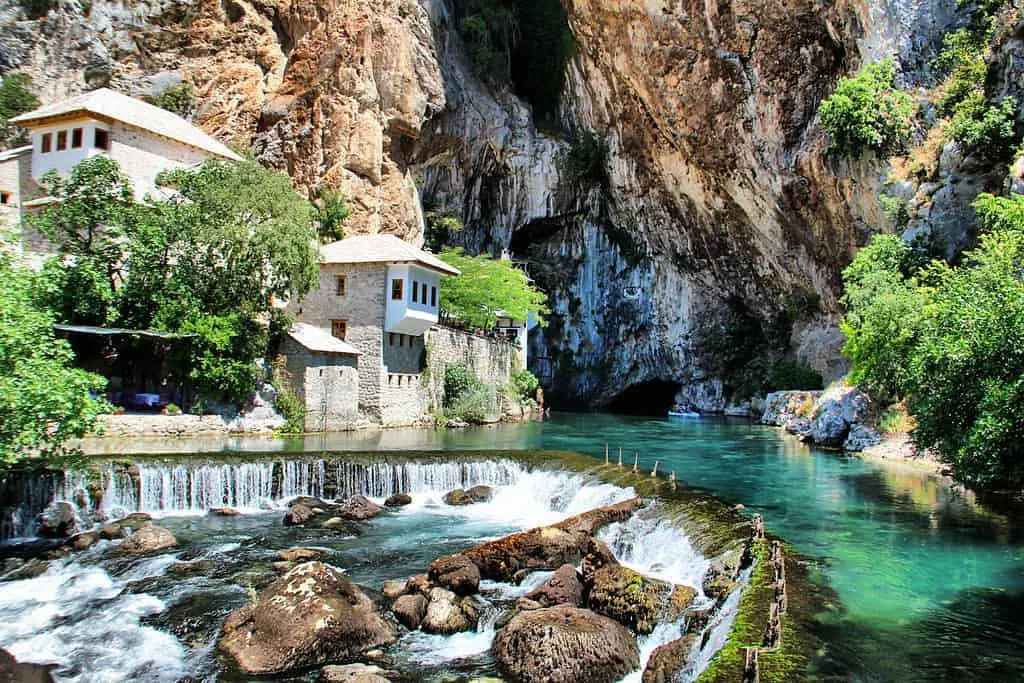
Today, there are multiple levels of political structure arising out of the 1990s war’s impact on the country’s ethnic groups. The national government is relatively weak, with decentralized decision-making in layers: geographic districts, cantons, municipalities and “official” cities. One of the main political objectives Bosnia and Herzegovina has at this time is integration within the European Union. Reforms are still in progress ahead of that affiliation.
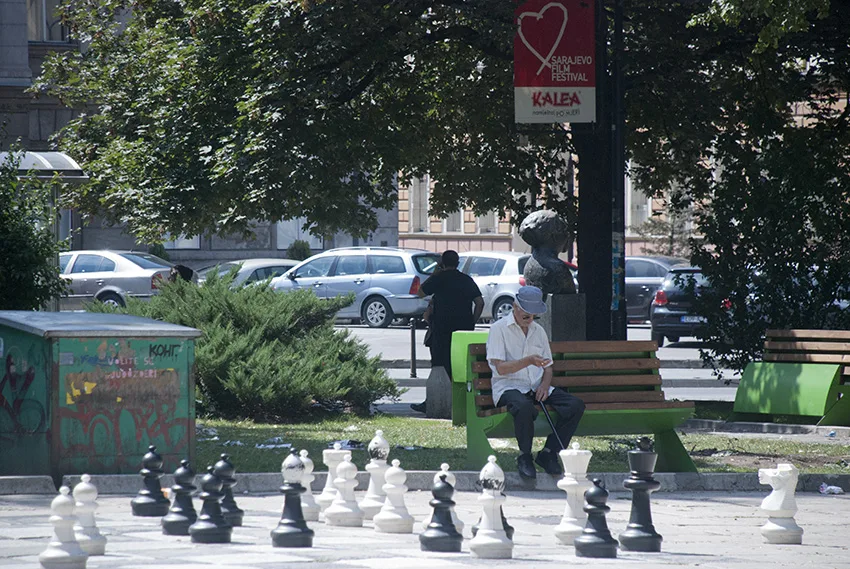
Are practicalities in daily life affected by this complexity? Definitely. Rarely, we were told, does anything get done at satisfactory speed. Sometimes, it was shared, progress is made outside of requirements. Other times, projects are indefinitely halted. We can all relate how “decision by committee” affects outcomes. This is the mire within which attempts to better and modernize the country operate under the BIH authorities.
7. You’ll enjoy wonderful Bosnian coffee, but you need to know the 1-2-3 rule.
Bosnian coffee is world famous for good reason. It’s strong, but not muddy as other regional coffees (Turkish coffee, anyone?) can be. As is common in this part of the world, coffee culture includes ritual preparation and ceremonial enjoyment.
Should you be invited in for coffee with a new friend in Bosnia you must understand Bosnia coffee etiquette – the rule of 3: the first coffee is always one of welcome.
The second coffee is brewed and poured as the signal for intimate conversation concerning whatever subject is at hand. It is during the second coffee that you and your host strengthen your bond by understanding (but not necessarily agreeing with) each other.
The third brew and serving? It’s last call. You will enjoy it together, but you also know you’ve been given the nod that once finished, you’ll be on your way.
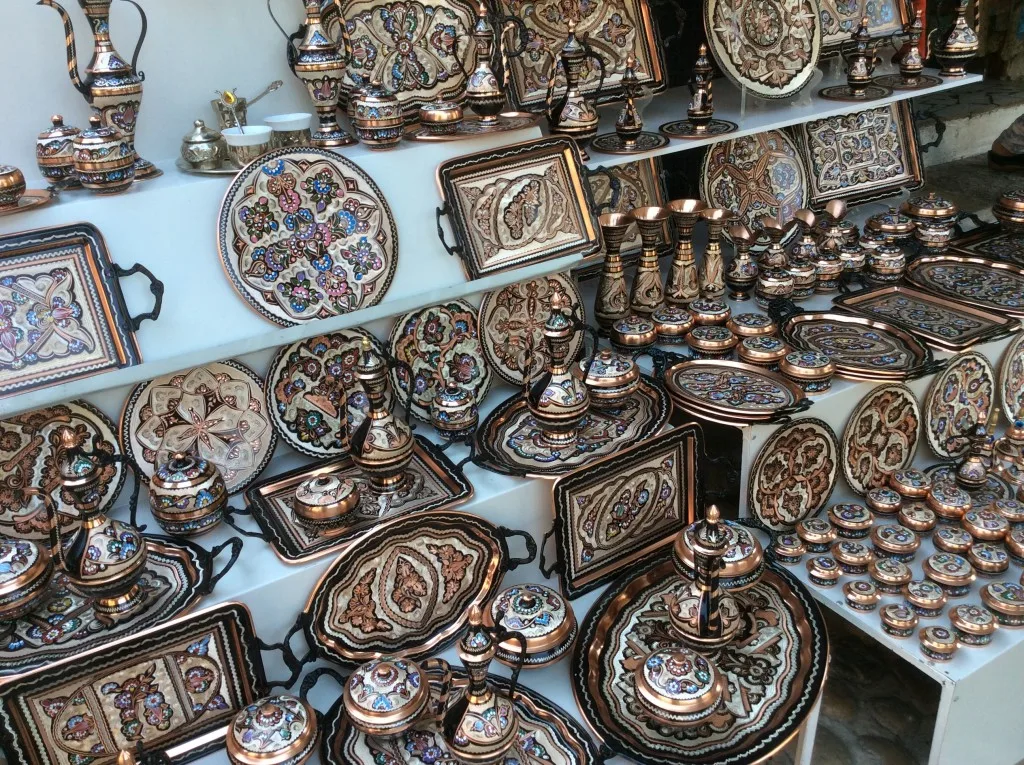
8. The local Sarajevo beer is really good.
Sarajevsko pivo has been brewed since 1864 in Sarajevo. Alert students of history will realize that the company was founded long before the decline of the Ottoman Empire’s hold over Bosnia. This disputes the notion that Islamic tradition and alcoholic beverages cannot co-exist.
Brewed with spring water from a source in the courtyard of the current building (which dates from 1893), this Sarajevo beer is a plucky little thirst quencher. We both liked it.
During the Siege of Sarajevo, citizens risked their lives under sniper fire to draw water from the brewery’s spring.
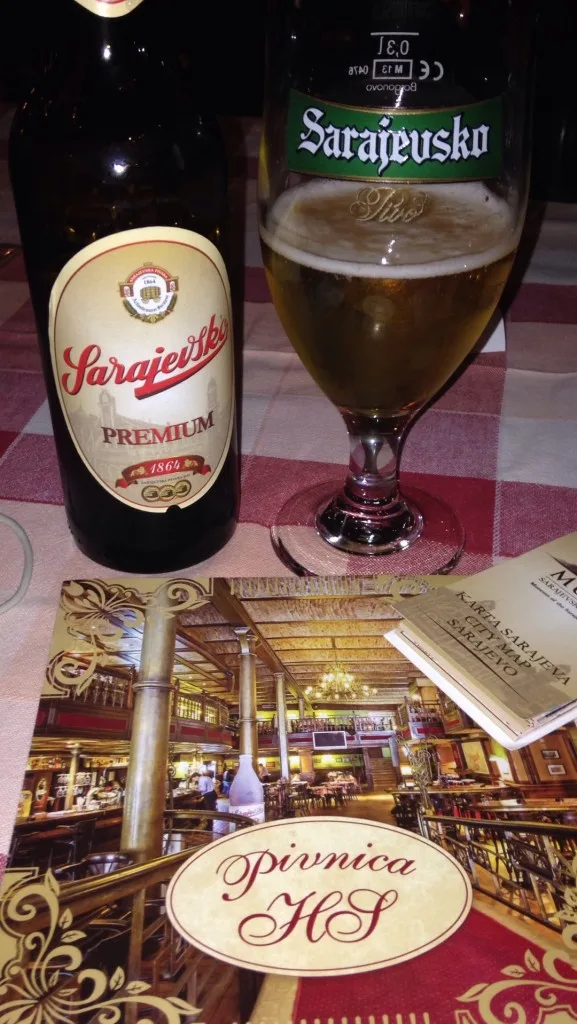
9. A trip to Bosnia and Herzegovina will convince you this is one of the most visually beautiful places in the Balkans region.
The scenery holds its own here, the country’s topography and natural beauty is comprised of a pleasing combination of mountains, hills, turquoise rivers and flatlands. Climate is Mediterranean in the south, while inland in Central Bosnia you’ll get hot summers with cold and snowy winters.
About 50% of Bosnia is forested, with wildlife such as bears, wolves, boar, deer, falcons, and the rare chamois. One of the only two remaining primeval forests in Europe, the Perucica Forest Reserve is located within the oldest of Bosnia and Herzegovina’s national parks, filled with natural resources.
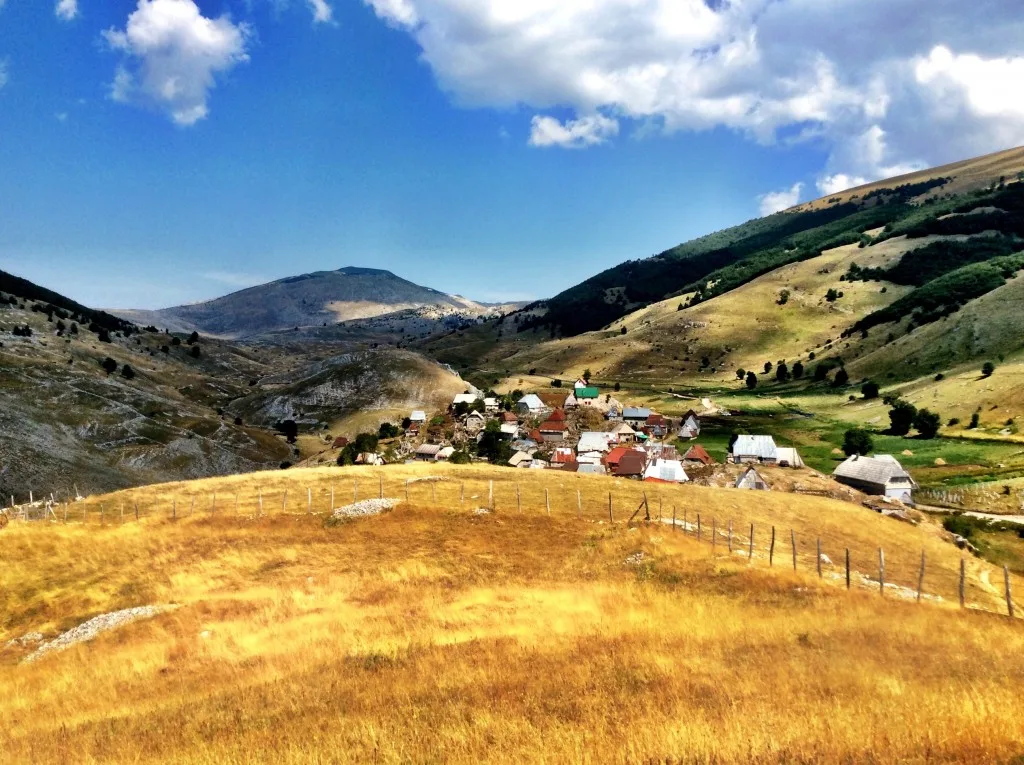
The famous Kravice waterfalls – known as Bosnia and Herzegovina’s “mini-Niagara” are a great day trip for scenic viewing, photography and swimming.
Click to arrange a private tour to Kravice from Mostar or to arrange a full day tour to Kravice from Sarajevo.

Not only is the geography scenic, but so is the evidence of man. Impossibly beautiful vistas with storybook qualities awaited us everywhere. We appreciated a meld of modern vibrancy and timelessness.
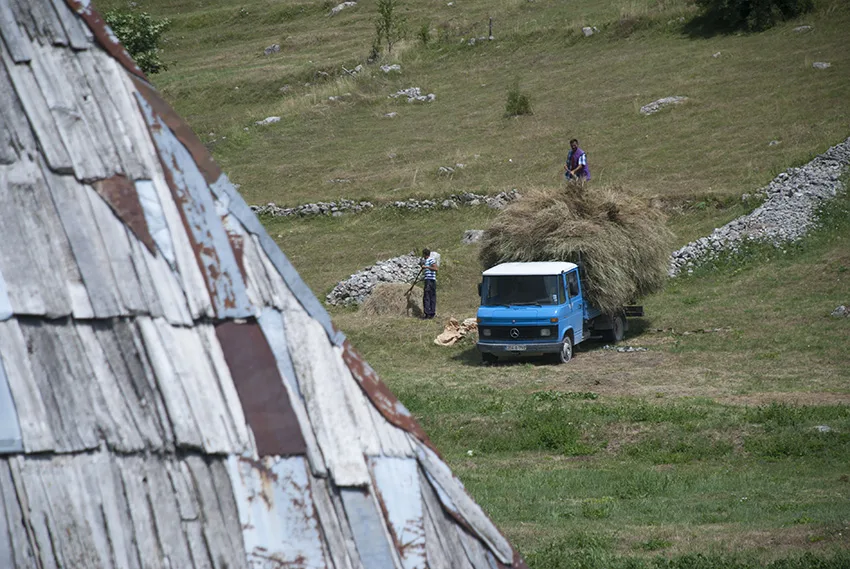
We also recognized that hardship meant the old ways might not live much longer. Our visit to Lukomir, the oldest and highest semi-nomadic village in the Dinaric Alps of Bosnia, remains one of the most memorable experiences we have had in all our travels. This is the only such village in Bosnia which was not destroyed by the Serbs in the 1990s war.
You can visit in the summer months from late May to early September, depending upon weather conditions. The village is located at very high altitude above the Bjelasnica Winter Olympics site on one of the numerous ranges near Sarajevo, so plan your attire accordingly. You will interact with locals, have a traditional meal and Bosnian coffee, and hike along the ridge of the Rakitnica Canyon, 800 meters deep.
This was our most memorable experience on our trip to Bosnia and Herzegovina. We highly recommend a tour visit to Lukomir.
Click here for more information and book your visit to Lukomir.
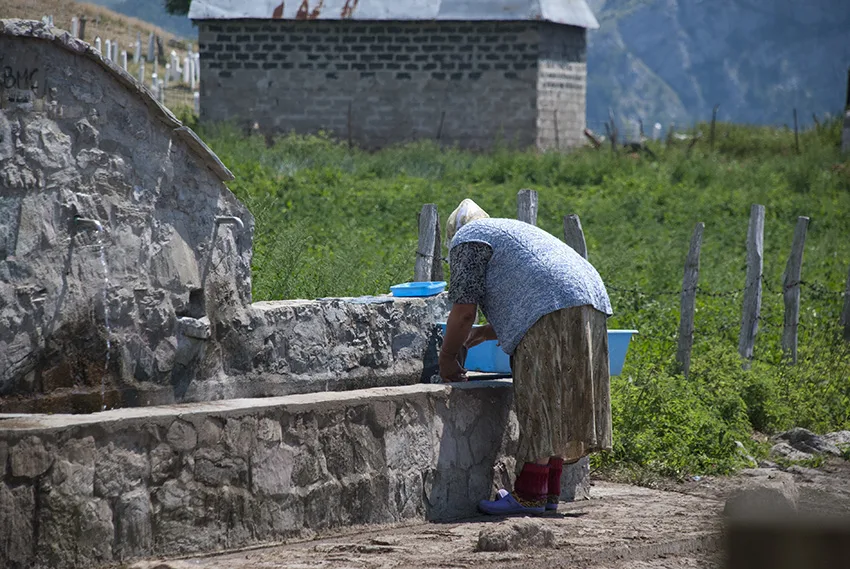
10. Your dollar goes a very long way and is very welcome. Bosnia and Herzegovina travel is inexpensive by Western standards.
Bosnia and Herzegovina tourism and ecotourism is on the rise. The southern Alpine terrain has wilderness and natural assets which attract skiers, bikers, hikers, whitewater enthusiasts and mountaineers.
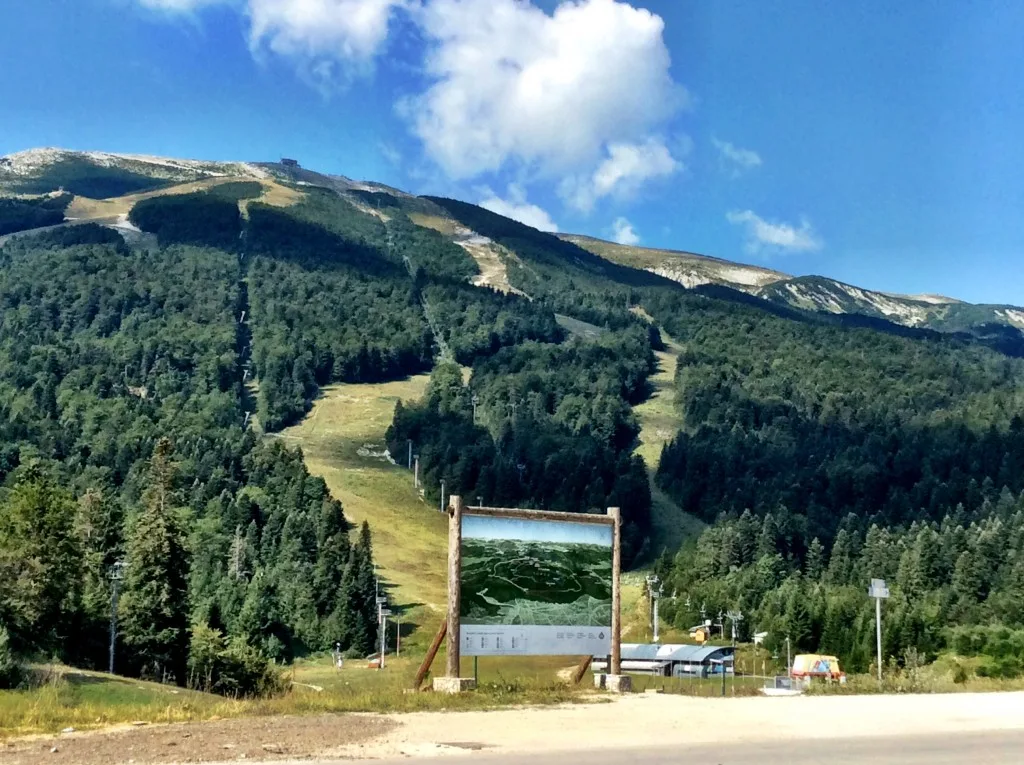
Bosnia and Herzegovina has a rich history because it has been a cultural crossroads through the centuries. This provides a variety of architectural, religious, commercial, and interpersonal perspectives. Your dollar goes farther here than in neighboring Croatia and other Western Mediterranean and EU countries.
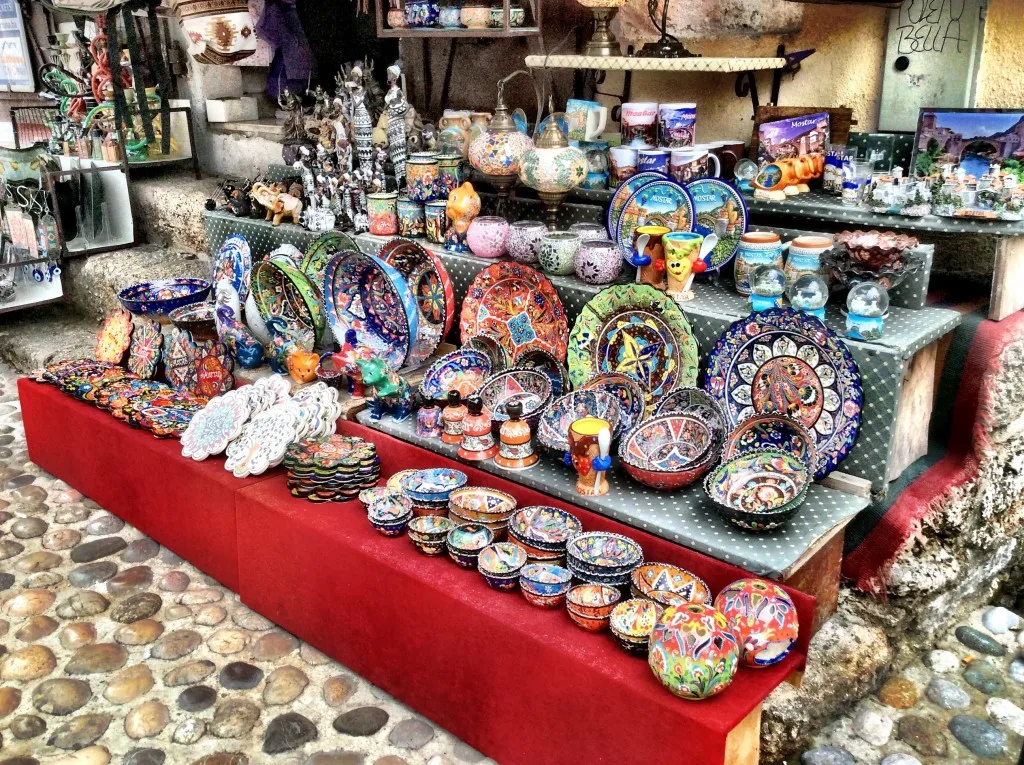
We were welcomed with open arms and a generosity of spirit, with high levels of comfort at very affordable rates. This combination made for wonderful experiences in this beautiful country. The value of Bosnia & Herzegovina travel for first timers and repeat visitors alike is highly demonstrable by any measure. Why not consider it?
Pinnable Images:
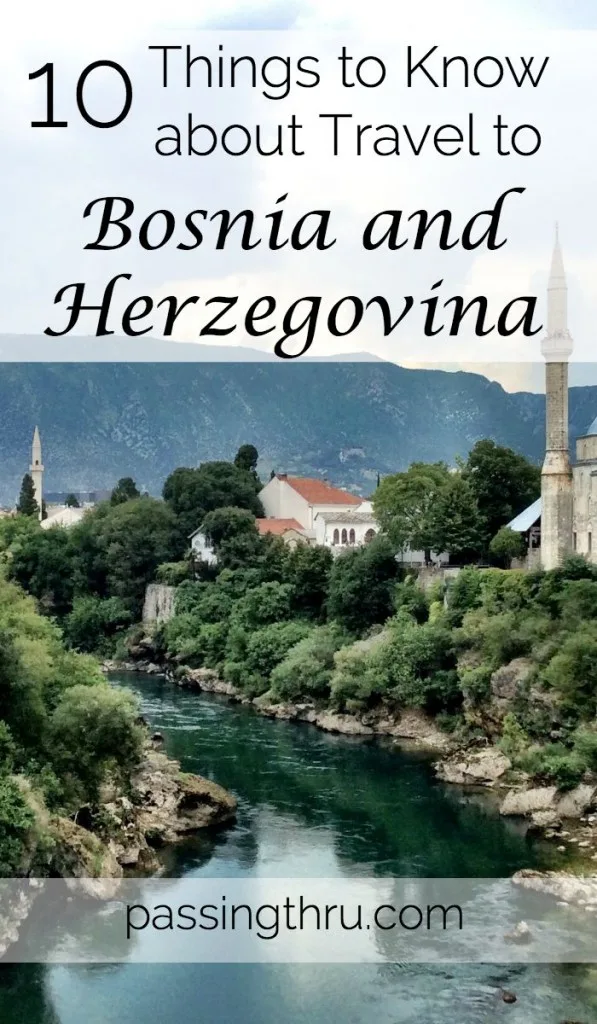
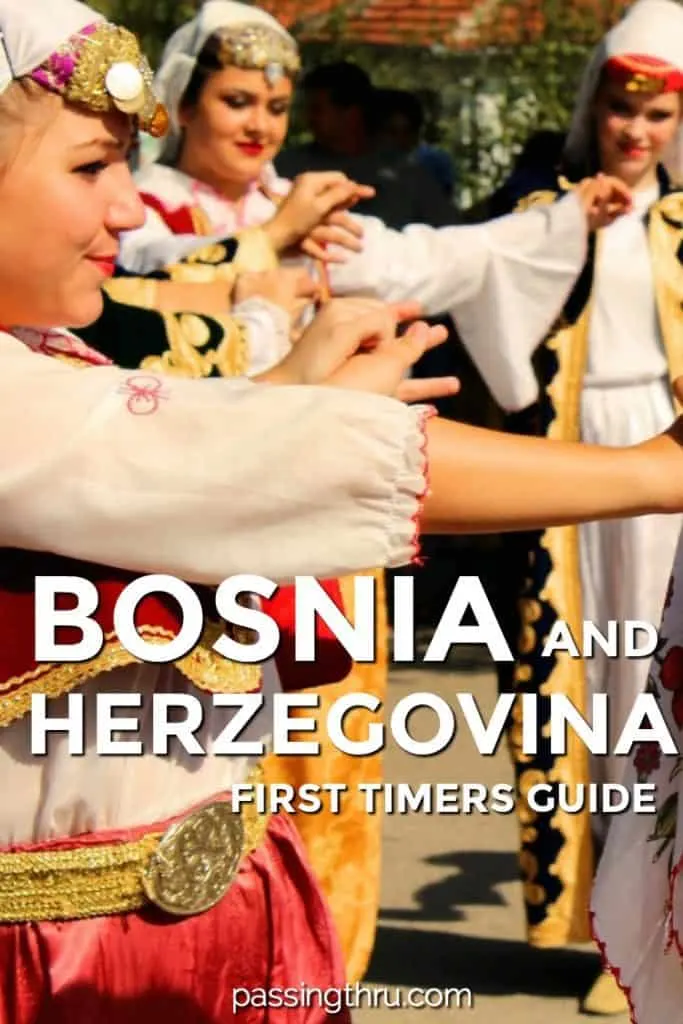
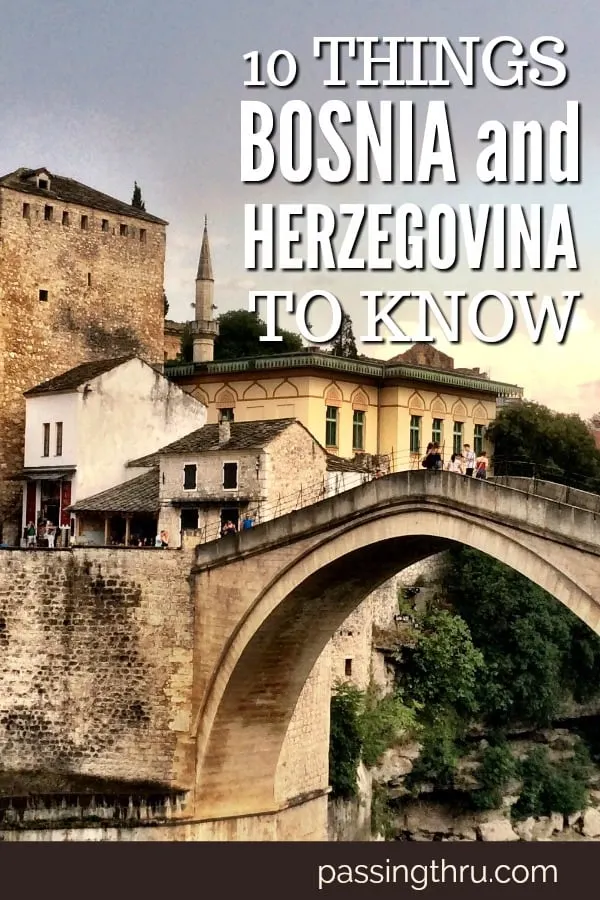
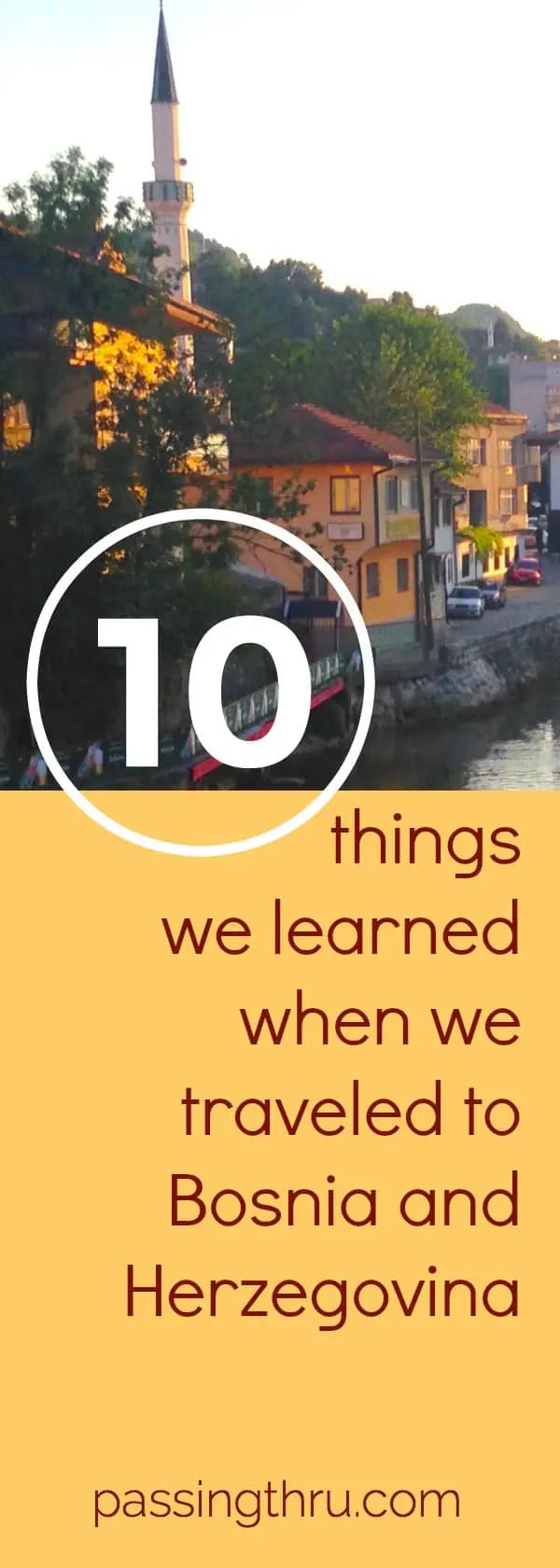
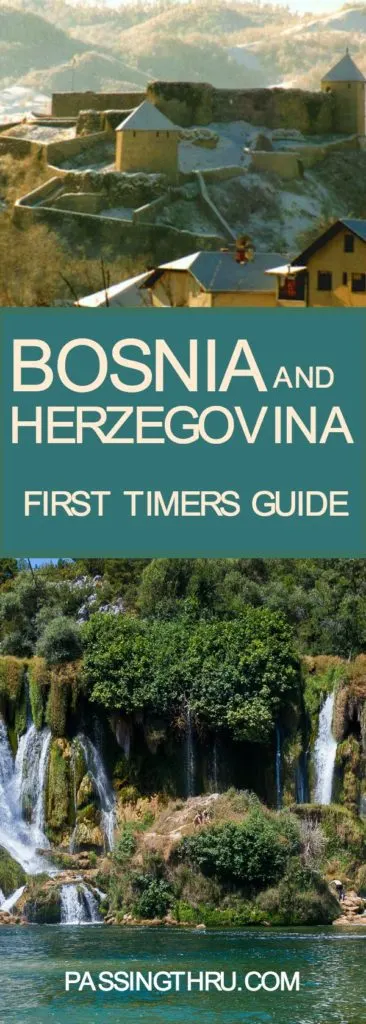
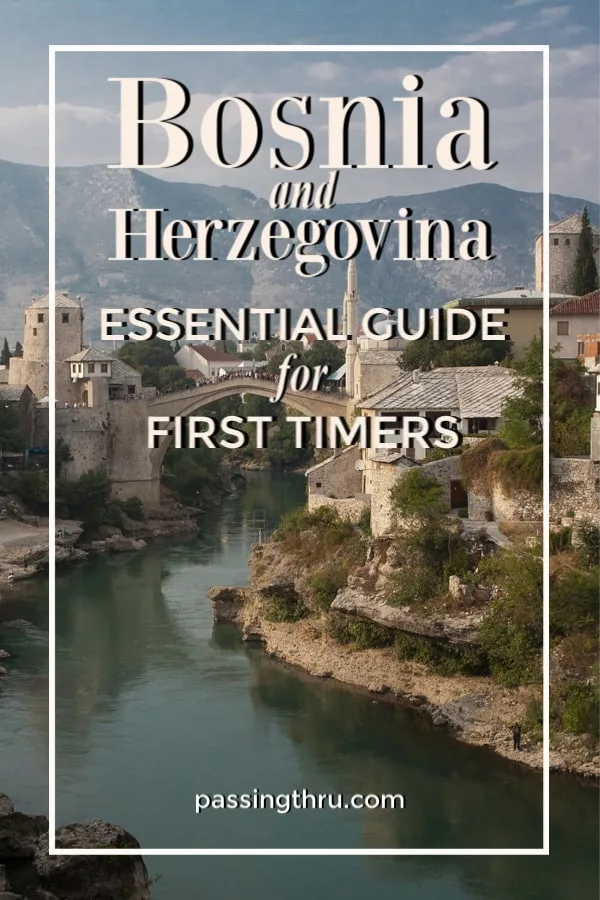
Tips for Trip Success
Book Your Flight
Find an inexpensive flight by using Kayak, a favorite of ours because it regularly returns less expensive flight options from a variety of airlines.
Book Your Hotel or Special Accommodation
We are big fans of Booking.com. We like their review system and photos. If we want to see more reviews and additional booking options, we go to Expedia.
You Need Travel Insurance!
Good travel insurance means having total peace of mind. Travel insurance protects you when your medical insurance often will not and better than what you get from your credit card. It will provide comprehensive coverage should you need medical treatment or return to the United States, compensation for trip interruption, baggage loss, and other situations.Find the Perfect Insurance Plan for Your Trip
PassingThru is a participant in the Amazon Services LLC Associates Program. As an Amazon Associate I earn from qualifying purchases.
To view PassingThru’s privacy policy, click here.



Masud Hannan
Saturday 9th of February 2019
Yes, Best blog on Bosnia. We are planning trip this summer. Can I rent a car from say Croatia or say Austria and travel to Mostar, Sarajevo etc. Are there cross border issues you are aware of. I plan to spend Two days in Bosnia. Thanks, Hannan
Betsy Wuebker
Monday 11th of February 2019
Hi Hannan - Yes, it's possible to rent a car in Croatia and take to Bosnia. Check with your rental agency for details.
23 UNESCO World Heritage Sites in Europe Recommended By Travelers | Solitary Wanderer
Thursday 9th of June 2016
[…] Mostar, Bosnia and Herzegovina (Passing Thru) […]
Dani
Wednesday 20th of April 2016
Kudos to you. Your blogs are great.....by far the most informative intelligent blogs I have read . You give so much insightful information and trust me I have read hundreds and hundreds of blogs.Great job
Betsy Wuebker
Wednesday 20th of April 2016
Hi Dani - Thank you so very much.
Bruno B
Thursday 17th of March 2016
Mostar for me was one of the most impactful places I've ever been! The clash of cultures is impressive, but I gotta say there is a weird athmosphere going on. It seems the city is still not with peace with itself!
Betsy Wuebker
Thursday 17th of March 2016
Hi Bruno - Interesting that you would pick up on that vibe. We did sense uneasiness, but attributed it more to difficult economy and low tourism numbers. Bosnia and Herzegovina is struggling. The benefit to travelers is that our money goes farther and our presence is very much appreciated.
International Travel Safety Don'ts - A Baker's Dozen - Passing Thru
Monday 21st of December 2015
[…] other remote areas. We spent time in two cities, and kept on the road in the mountains. Therefore, we learned other things, including the war there has been over for 20 years and people are looking to the future. Imagine […]